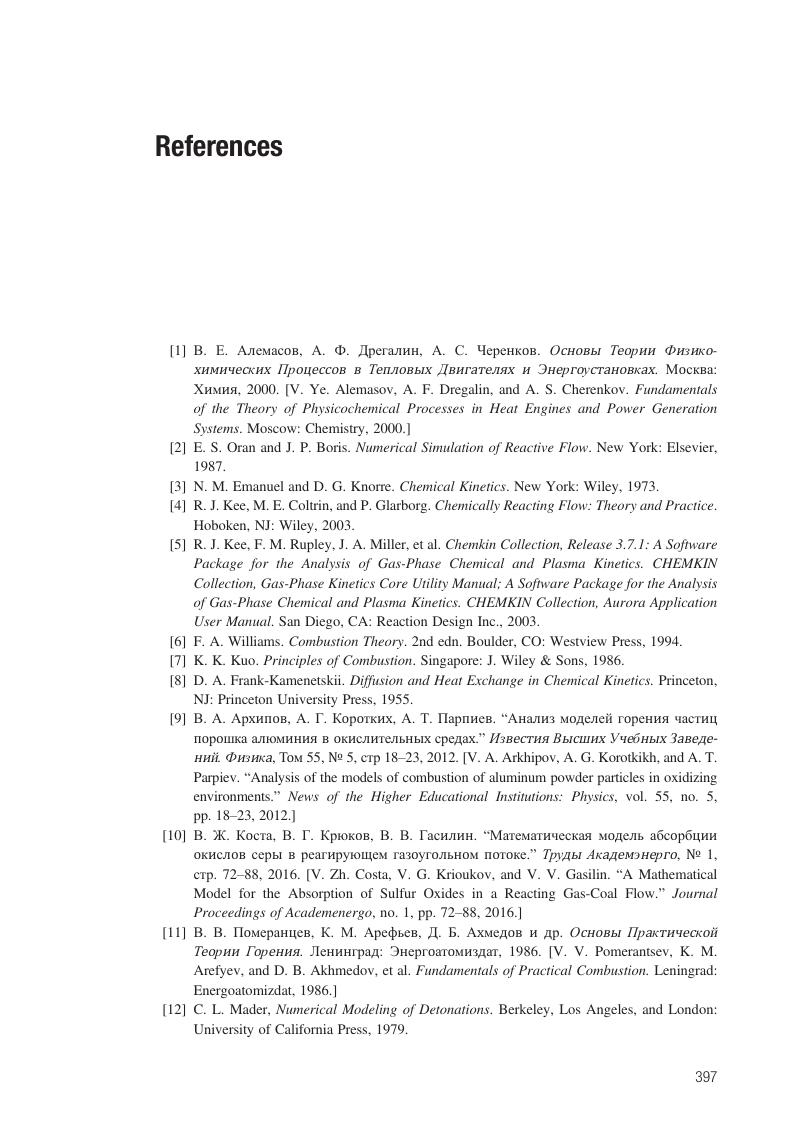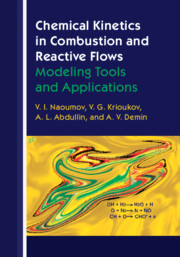Book contents
- Reviews
- Chemical Kinetics in Combustion and Reactive Flows
- Chemical Kinetics in Combustion and Reactive Flows
- Copyright page
- Dedication
- Contents
- Preface
- Acknowledgments
- Nomenclature
- Part I Basic Components of Chemical Nonequilibrium Models
- Part II Mathematical Modeling of Selected Typical Modes of Combustion
- Part III Simulation of Combustion and Nonequilibrium Flows in Propulsion and Power Generation Systems
- References
- Index
- References
References
Published online by Cambridge University Press: 16 August 2019
- Reviews
- Chemical Kinetics in Combustion and Reactive Flows
- Chemical Kinetics in Combustion and Reactive Flows
- Copyright page
- Dedication
- Contents
- Preface
- Acknowledgments
- Nomenclature
- Part I Basic Components of Chemical Nonequilibrium Models
- Part II Mathematical Modeling of Selected Typical Modes of Combustion
- Part III Simulation of Combustion and Nonequilibrium Flows in Propulsion and Power Generation Systems
- References
- Index
- References
Summary

Information
- Type
- Chapter
- Information
- Chemical Kinetics in Combustion and Reactive FlowsModeling Tools and Applications, pp. 397 - 417Publisher: Cambridge University PressPrint publication year: 2019
